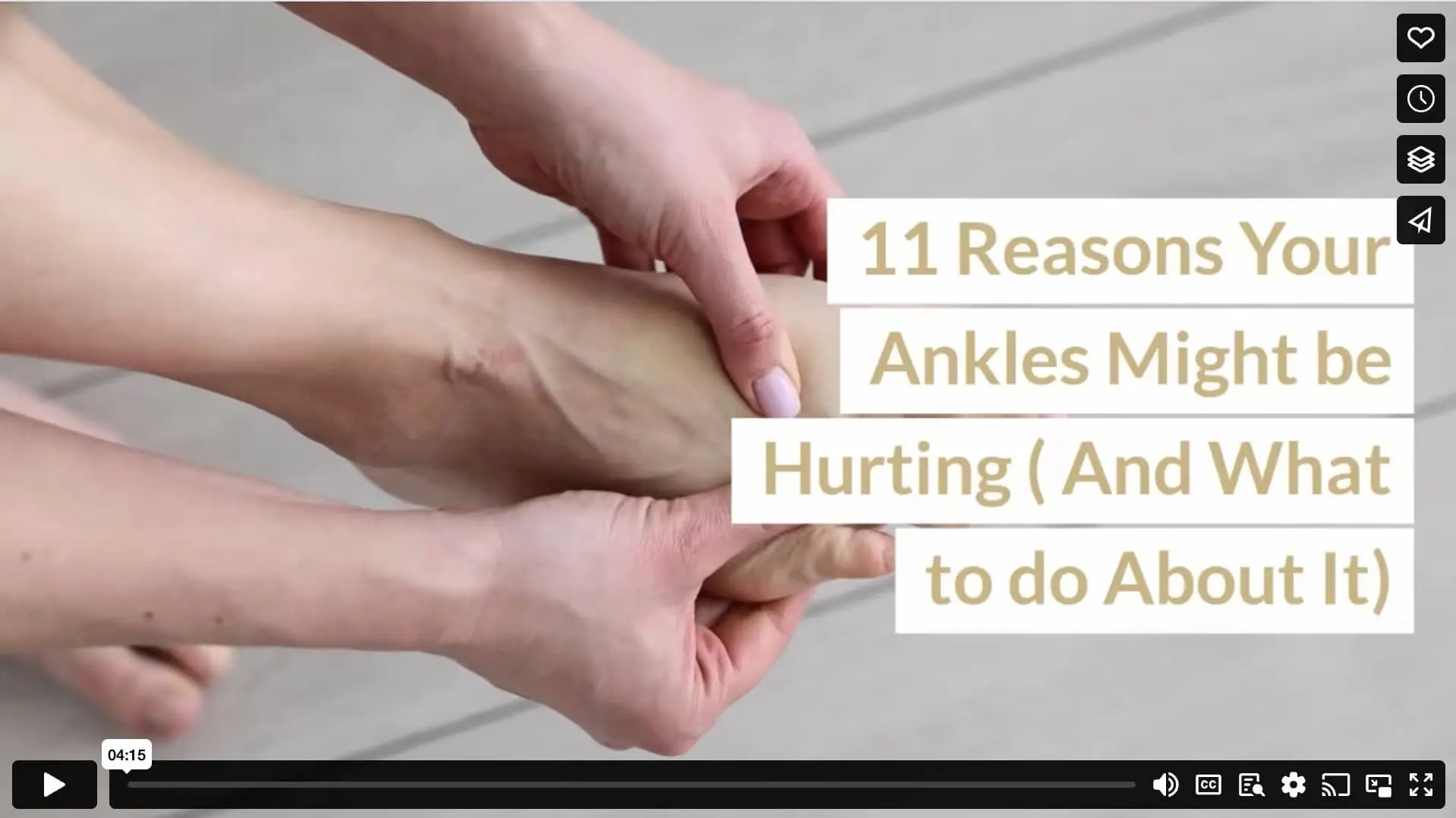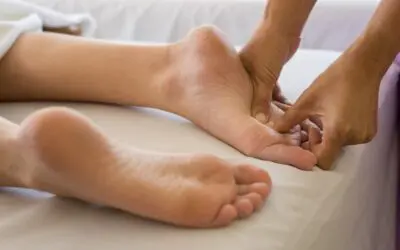If you’re hobbling around with ankle pain, chances are that you want that pain to end. But how do we get rid of the pain? The best way to treat it will depend on the source of the pain.
Here are 11 of the most common reasons your ankles might be hurting and what you can do to stop the pain.
1. Sprained Ankle
When you tear the ligaments that hold your ankle bones together, the result is a sprained ankle. Ankle sprains can be mild or more severe. Sprained ankles are the most common ankle injury.
If you have a sprained ankle, the first thing you will want to do is follow the RICE method. RICE stands for:
- Rest
- Ice
- Compression
- Elevation
If the RICE method does not help after a couple of days, you will want to visit a foot and ankle specialist to help you figure out the best way to help your ankle heal.
2. Gout
Although more common in big toes, gout is possible in ankles, too. Gout is the result of crystalized uric acid collecting in the joints. Rest, medications, a special diet, and exercise can all reduce the intensity of the gout attack.
3. Lupus
The autoimmune disease lupus attacks healthy tissue and results in pain. Lupus does not have a cure, but medicine can help control it and reduce the pain. A healthy diet and exercise can also contribute to reducing pain caused by lupus.
4. Rheumatoid Arthritis
Another autoimmune disease that can create ankle pain (as well as other joint pain) is rheumatoid arthritis. Rheumatoid arthritis is when the immune system attacks the body’s joints. While rheumatoid arthritis will be with you forever, you can ease the pain through special exercises and shoe inserts.
5. Diabetes
Type 2 diabetes or unmanaged Type 1 diabetes can result in diabetic neuropathy. Neuropathy can make you begin losing the feeling in your extremities, usually starting with your feet and ankles. When they are numb, your feet and ankles can’t warn you that you might be hurting them or causing damage to them until it is too late. A simple cut can become a significant infection. If you have diabetic neuropathy, prioritize regular self-checks of your feet.
6. Ankle Fracture
If any of the three bones in your ankle breaks or fractures, you’re almost guaranteed to have some ankle pain. Swelling and bruising often accompany a fracture. Visit a podiatrist as soon as possible to determine the best treatment for your fracture. You might need a cast, a splint, or possibly even surgery.
7. Flat Feet
Whether you have flat feet from excessive wear, pregnancy, or winning the genetic lottery, your feet might create ankle pain for you. This is due to the misalignment between your ankles and your knees, which flat feet can cause. Physical therapy exercises and arch supports can be a productive flat feet treatment.
8. Achilles Tendonitis
Tiny tears in the Achilles tendon can result in the painful condition of Achilles tendonitis. You might notice swelling on the back of your ankle, where it meets with the calf muscle. It may also be tender or warm. The best Achilles tendonitis treatment is rest.
9. Bursitis
You have two bursa sacs between your ankle tendons and bones. These bursa sacs add cushioning, but they can become inflamed and painful. Causes of bursa sac inflammation include:
- Overuse
- Starting a new workout regimen
- High-heeled shoes
- Footwear changes
- Arthritis
The RICE method is helpful for bursa sac inflammation. You can also add over-the-counter pain medications to help you deal with the discomfort.
10. Osteoarthritis
When the cartilage between bones wears down, you are left with osteoarthritis. The bones then come directly in contact, a painful experience that can result in stiffness and loss of motion. A few different treatments may be necessary to help you alleviate the pain caused by osteoarthritis:
- Steroid shots
- Anti-inflammatory medication
- Physical therapy
- Ankle braces
- Surgery
A podiatrist will be able to help you create the best treatment plan for your situation.
11. Infection
Although rare, infections can end up in your joints. If you notice that your ankle is warm and painful and you have a fever, you must get to a doctor as soon as possible.
Now What?
If you’re overwhelmed by the list of potential reasons your ankles are in pain, call your podiatrist. He or she can help you determine the cause of your pain and solidify a treatment plan that will get you back on your feet quickly.
Infographic
If you’re dealing with ankle pain, it’s important to identify the cause for effective treatment. This infographic outlines eleven common reasons and how to stop the pain.





